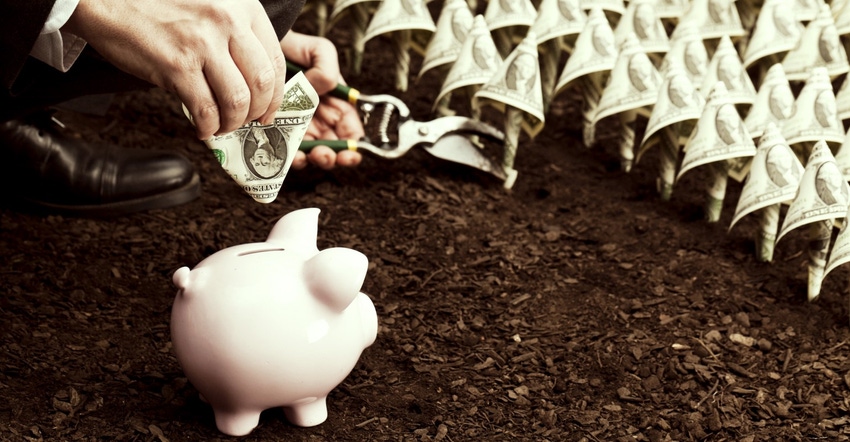Farmers will remain buyers of land if they have financial standing to do so.
July 10, 2020

The agricultural land market started 2020 with a glimmer of optimism -- until COVID-19 slammed into people’s lives. Catastrophic disruptions to the world’s economy have reached U.S. agriculture, playing havoc with marketing chains. As a result, the land market hit the pause button as buyers and sellers slowed activity. Opposing factors will be pushing and pulling land values in the coming months to determine what’s next for the land market, according to Farmers National Co.
Before COVID-19, many U.S. agriculture sectors were coming off a difficult year but were gaining some momentum. Trade deals were coming into place, and commodity prices showed a hint of getting better.
“The market for good cropland was stable to slightly stronger in many areas as interest rates remained low and demand was fairly strong for the low supply of land for sale. Recreational land had good demand as the general economy and the overall wealth of individuals was strong,” said Randy Dickhut, senior vice president of real estate operations for Farmers National.
After COVID-19 struck, disruptions affected most aspects of agriculture. Dairy producers saw an immediate drop in fluid milk consumption when schools closed. Livestock producers who sold directly to restaurants or farmers markets saw a prime marketing channel dry up overnight. The shutdown of meat processing facilities severely affected consumers, and that impact stretched all the way back to the farm. Corn producers saw the bottom drop out of ethanol usage at the onset of stay-at-home rules.
Farmers National land auctions continued during March and April, albeit with social distancing procedures in place. What were to be public auctions became stay-in-your-pickup in the parking lot live auctions, bid sales or online auctions, the company noted. Sale outcomes varied by region and property. The land market became more cautious in the areas with dairy, livestock and ethanol as these industries endured mounting bad news. In other areas, sale prices were stable as demand for good-quality land was more than adequate for the amount that did come up for sale.
“Real estate sales activity at Farmers National Co. was strong during the first seven months of its fiscal year despite an industry-wide slowdown. Sales volume was up 6-8% compared to each of the past three years. Sellers and buyers continue to actively call Farmers National Co. agents as real estate business for the company continues during this uncertain period,” Dickhut said
Nebraska insight
According to an update on the "Nebraska Farm Real Estate Market Highlights 2019-20" publication released by the University of Nebraska-Lincoln, the statewide all-land average value for the year ending Feb. 1, 2020, averaged $2,725 per acre, or an increase of about 3% ($80 per acre) versus the prior year’s value of $2,645 per acre, reversing a half-decade of market declines.
Future property tax policies, current crop prices and farm input costs appear to be the three most negative factors leading to the decline in the market value of land. Other factors displaying somewhat negative features include those affecting commodity prices or the financial concerns of farm and ranch operations, the report noted. Events surrounding the impact of COVID-19 on the agriculture sector and the general economy have the potential to influence future changes in land values. Many factors around these economic events remain uncertain.
Recent reports indicate that a high degree of pressure exists between landlords and tenants on setting an equitable cash rental rate due to deteriorating commodity and livestock prices in 2020. Many retired or absentee landowners are seeking a certain level of return on their asset while facing high property taxes. Producers seeking to receive a positive return on rented properties face tight margins due to price declines.
Looking ahead
Various factors that can affect land values are pulling in opposite directions. Positive influences include the continued low supply of good land for sale and historically low interest rates. For many, investing in agricultural land will be a safe haven for the current times, a long-term hedge or the means to invest in the sustainability of the food supply, Farmers National said. The average land buyer who has resources may invest in recreational land for a place in the country. Farmers will remain buyers of land if they have the financial standing to do so.
Challenges that could put pressure on land values include the overriding potential for depressed farm incomes and the further decline of working capital for producers. Will lower farm incomes overcome the low interest environment to put pressure on farmland values? Will farm finances be helped enough by the additional infusion of federal cash payments to producers to maintain financial stability? Will there be more land come onto the market due to financial pressures that could tip the supply and demand equation?
“It is too soon to accurately answer what’s next for the land market except that agricultural land will continue to be bought and sold. Land passing to the next generation is a constant that remains in play no matter what. Decisions made by inheritors of land, producers, lenders, legislators and investors will come together over the coming months to provide the answer to what’s next for land values,” Dickhut said.
You May Also Like



